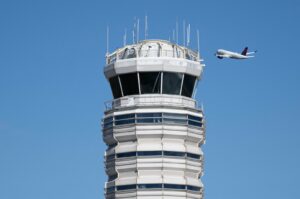“Release, release, release!”
With that cue, the Unity spaceship detaches from the belly of its mothership and begins to fall away, gliding forward and losing altitude.
A few seconds later, the ship roars past the speed of sound, trailing a tail of fire across the sky. Six people — two pilots and four passengers — are thrown back into their seats as they pass Mach 3 and, within seconds, are more than 300,000 feet above the Earth.
For the astronauts’ family and friends, a lounge on the ground offers a chance to see the astronauts off while enjoying a rare look at the first purpose-built spaceport for commercial travelers.
On Thursday, Virgin Galactic held its second commercial space launch, the first with tourists on board. (The first flight was occupied entirely by researchers with the Italian air force.)
Jon Goodwin, an 80-year-old former Olympian with Parkinson’s disease, became Virgin Galactic’s first paying space tourist. Keisha Schahaff and Anastasia Mayers — a mother-daughter duo who won their seats after entering a fundraising raffle — became the first people from Antigua and Barbuda to go to space and the first female astronauts from the Caribbean (not to mention the first mother-daughter duo to fly to space together).
Virgin Galactic is extremely secretive about its spaceport and what the experience of being an astronaut is like for those who buy the $450,000 ticket (or win a raffle). TPG had the chance to tour the spaceport and see where the astronauts would train for the week leading up to their flight, on the condition that reporters not take photos or share exact details. The company said that undergoing the experience firsthand without reading too much about what to expect keeps the experience more special.
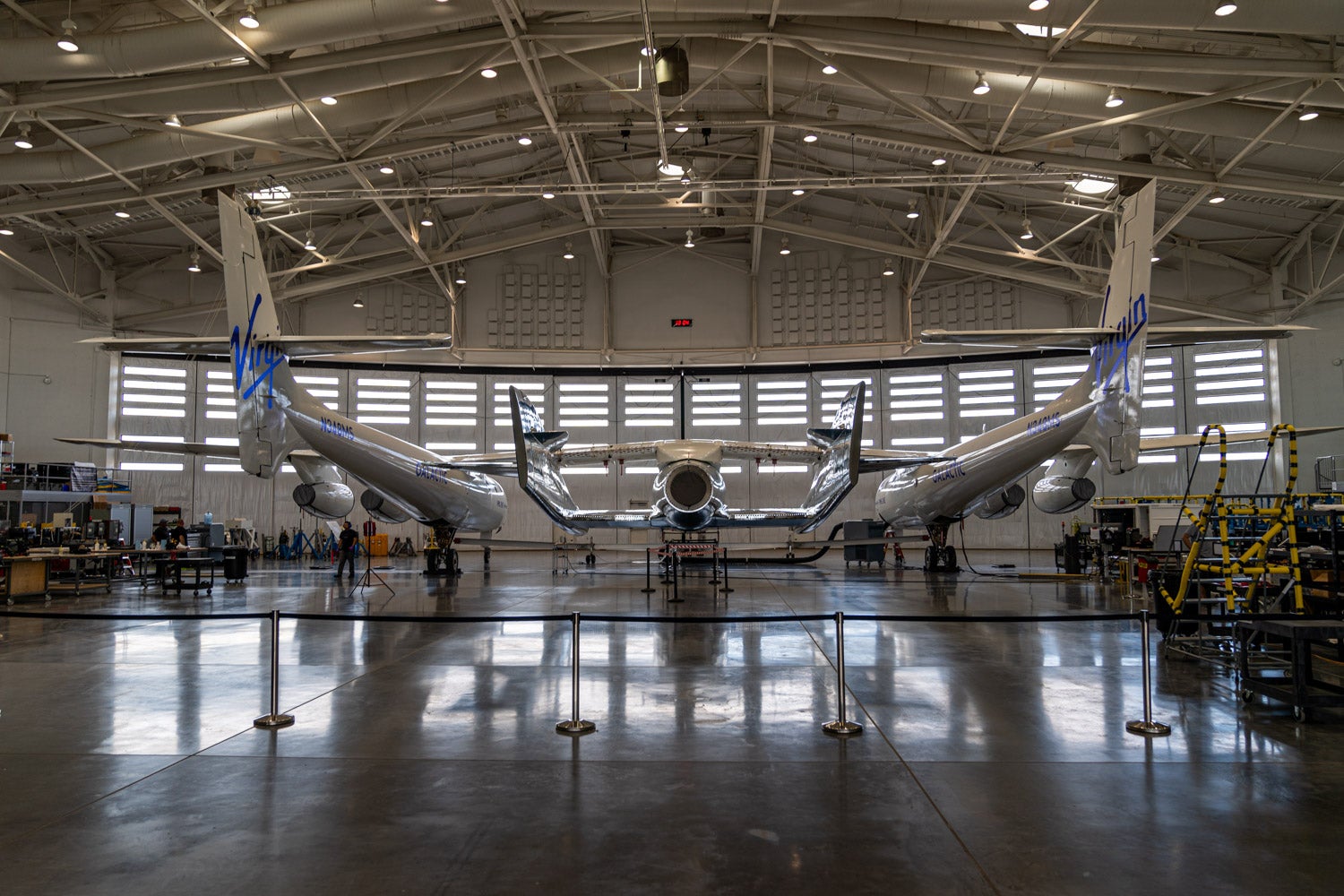
Still, we had the chance to see — and now, to describe — more of the space travel company’s facilities, including the hanger that plays host to the ship. The facilities are at Spaceport America, the first purpose-built commercial spaceport, in Truth or Consequences, New Mexico (the city renamed itself from “Hot Springs” in 1950 after a popular game show).
We also had the chance to see how a typical launch day plays out for VIP guests of astronauts, even if the finer details of what travelers experience were kept mostly under wraps.
Virgin Galactic said it plans to lower prices as it ramps up production of its spacecraft, enabling it to fly more frequently. While that’s years away, and prices will likely remain high even then, the start of commercial space tourism nevertheless offers a glimpse of what travel could be like in the not-so-distant future.
Into the final frontier
At 3:30 a.m., the wake-up alarms at the Hotel Encanto de Las Cruces in Las Cruces, New Mexico, begin to sound. The sun won’t be up for nearly three hours — even twilight is a while away — but it’s time to begin getting ready for the day. Virgin was tight-lipped on whether the astronauts stayed at the hotel, but much of the delegation surrounding the launch was there, including the press.
By 5 a.m., it’s time to begin the hour-plus drive to Truth or Consequences. A chartered bus leads the way, with a small motorcade of cars following. The bus pulls through the Border Patrol checkpoints that are common fixtures on highways within 100 miles of the northern and southern borders onto a state highway and a twisty side road that takes drivers past ranches and the occasional stray cow. Eventually, the landscape opens up to a guard booth, a parking lot and a fence.
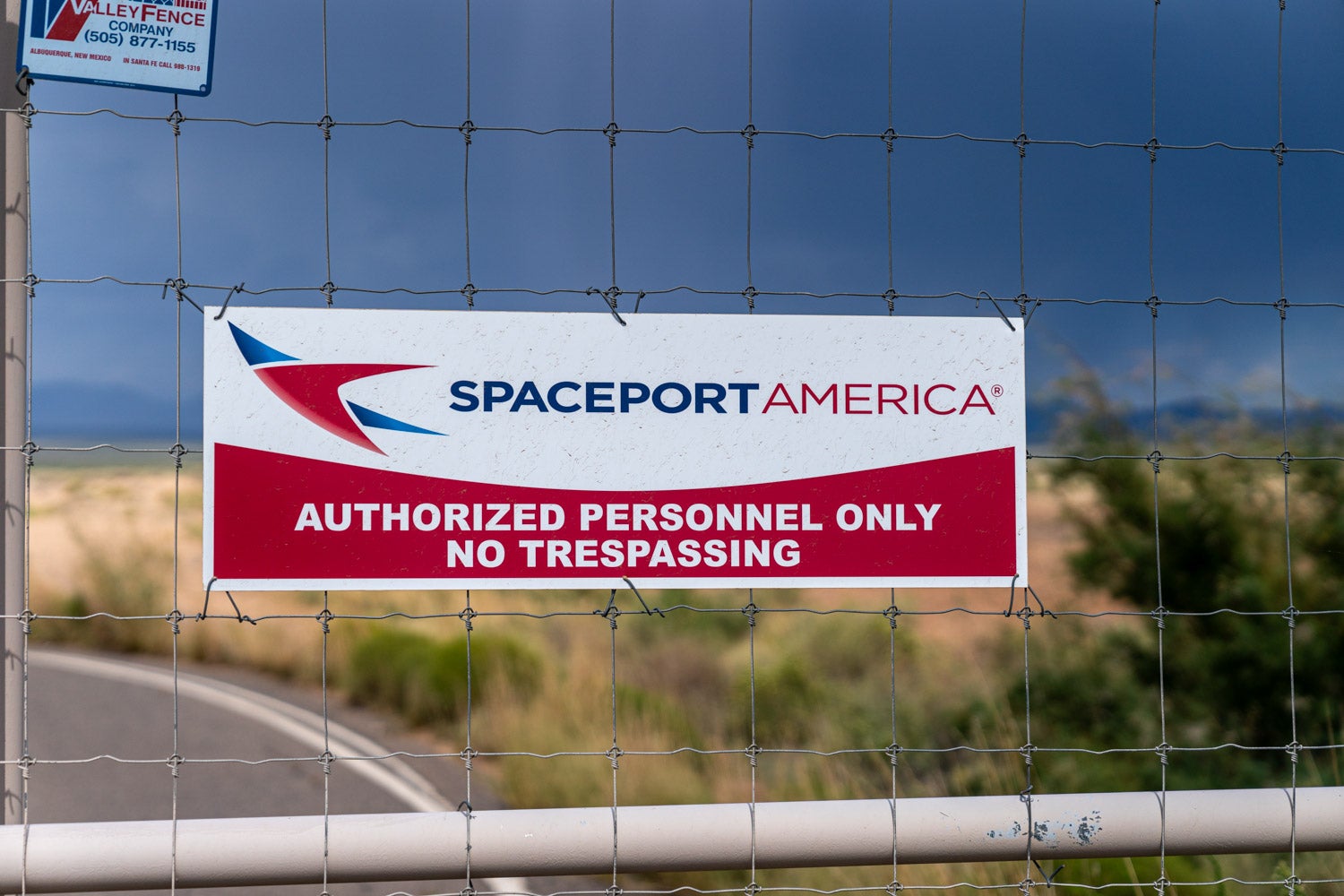
Step through a gate, and you’re at the spaceport terminal.
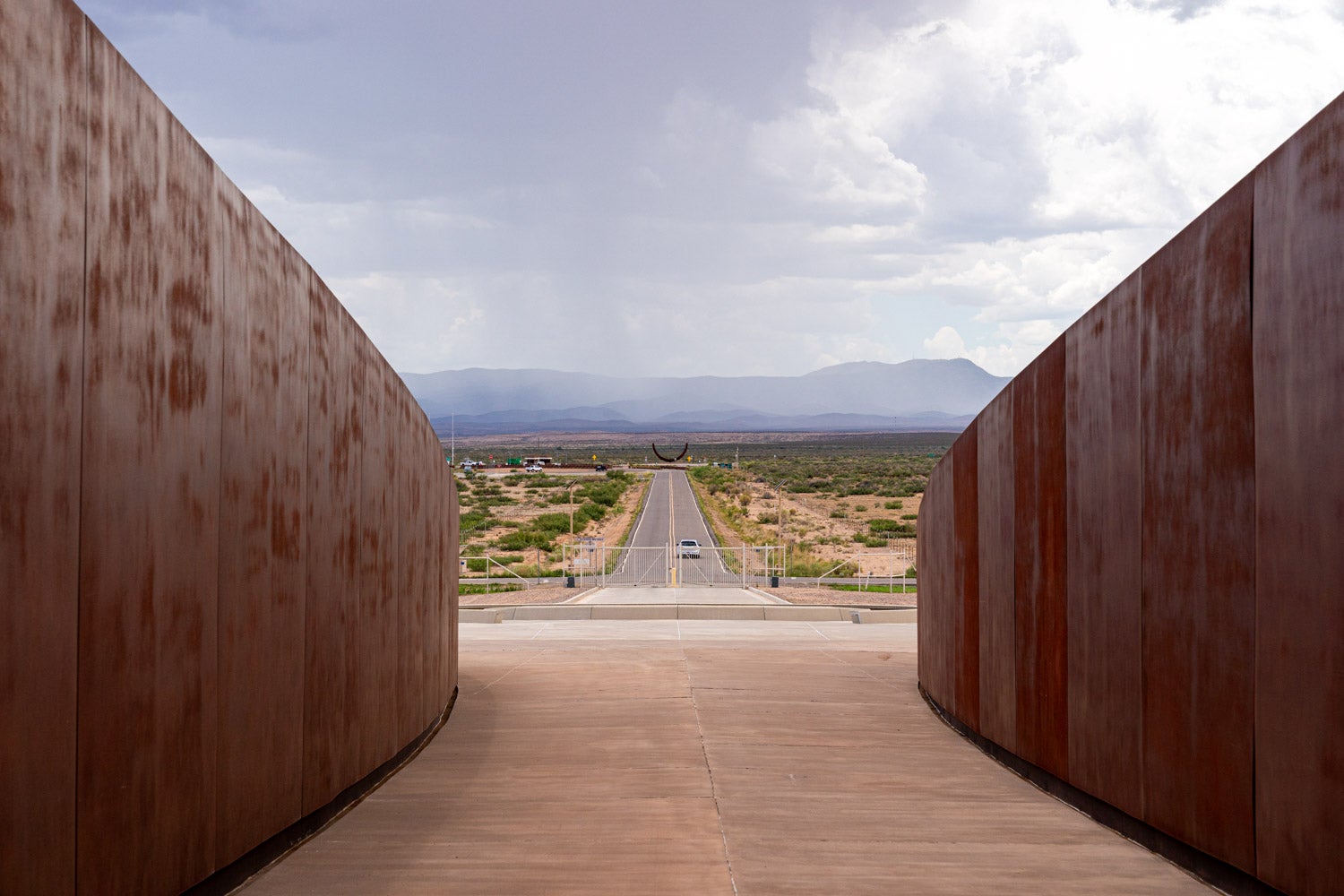
The astronauts will have entered the building through a back doorway that overlooks the vast New Mexico desert before taking an elevator up to their private rooms and training area.
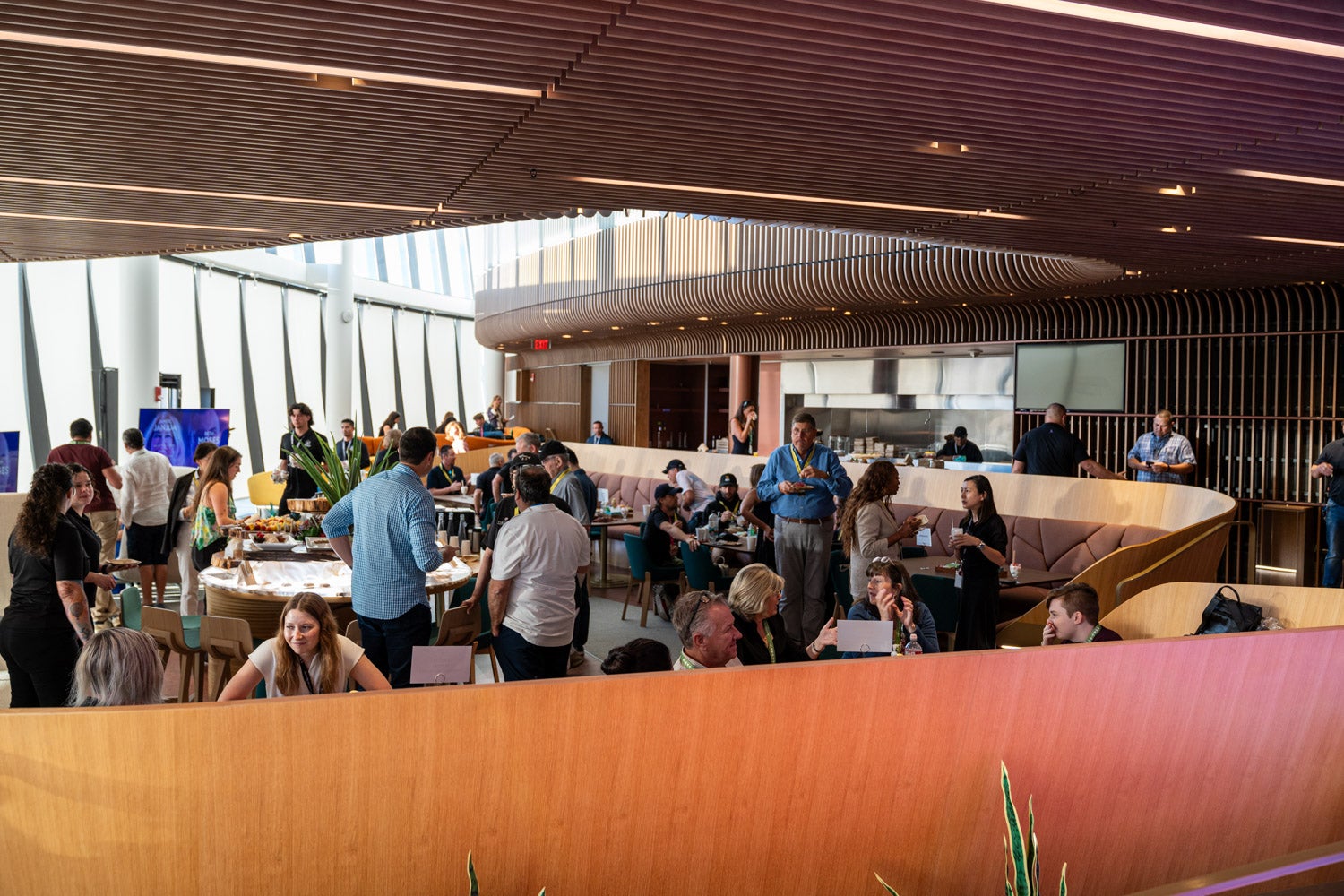
Everyone else piles in through the main entrance and into a wide-open lounge area.
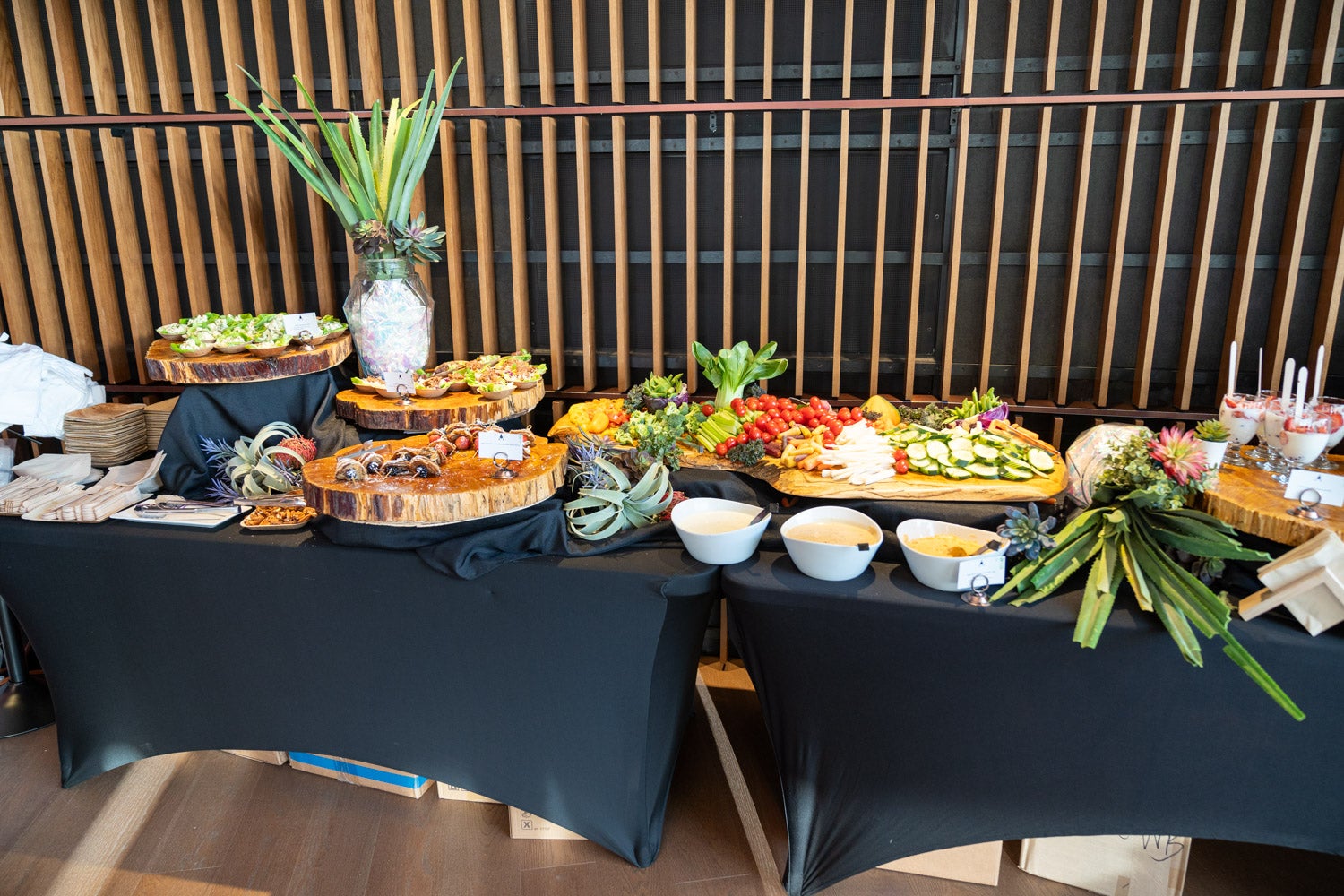
Breakfast and, crucially, coffee are available, while tables and seats offer spectators the chance to relax and wait for the launch. At this particular launch, a separate side of the room was reserved for the press, with a stage for a press conference, desks and a buffet.
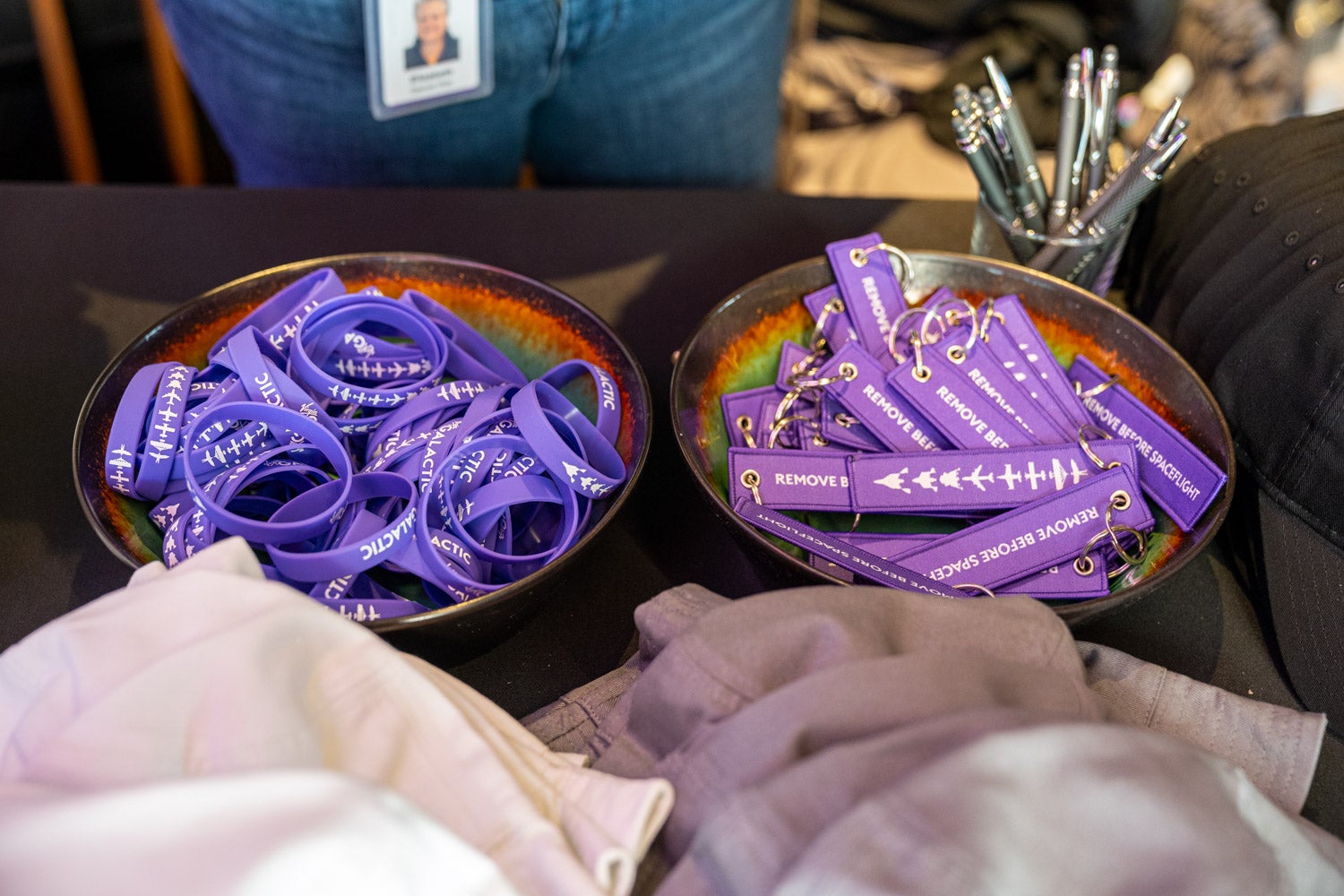
There was also a small pop-up store with souvenirs from the mission.
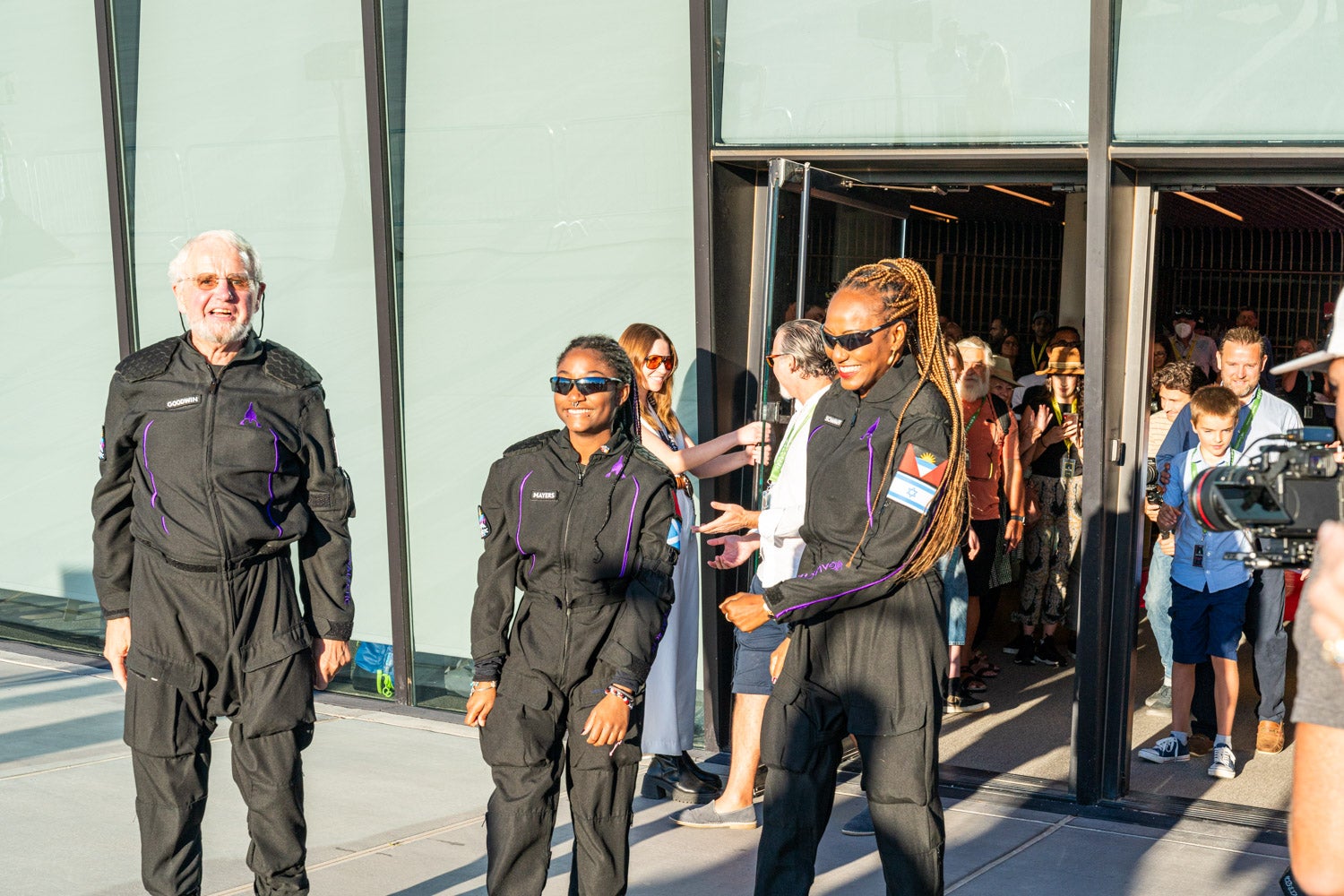
Once the astronauts are ready, they emerge from the spaceport’s private facilities for what Virgin Galactic calls “the hero walk.”
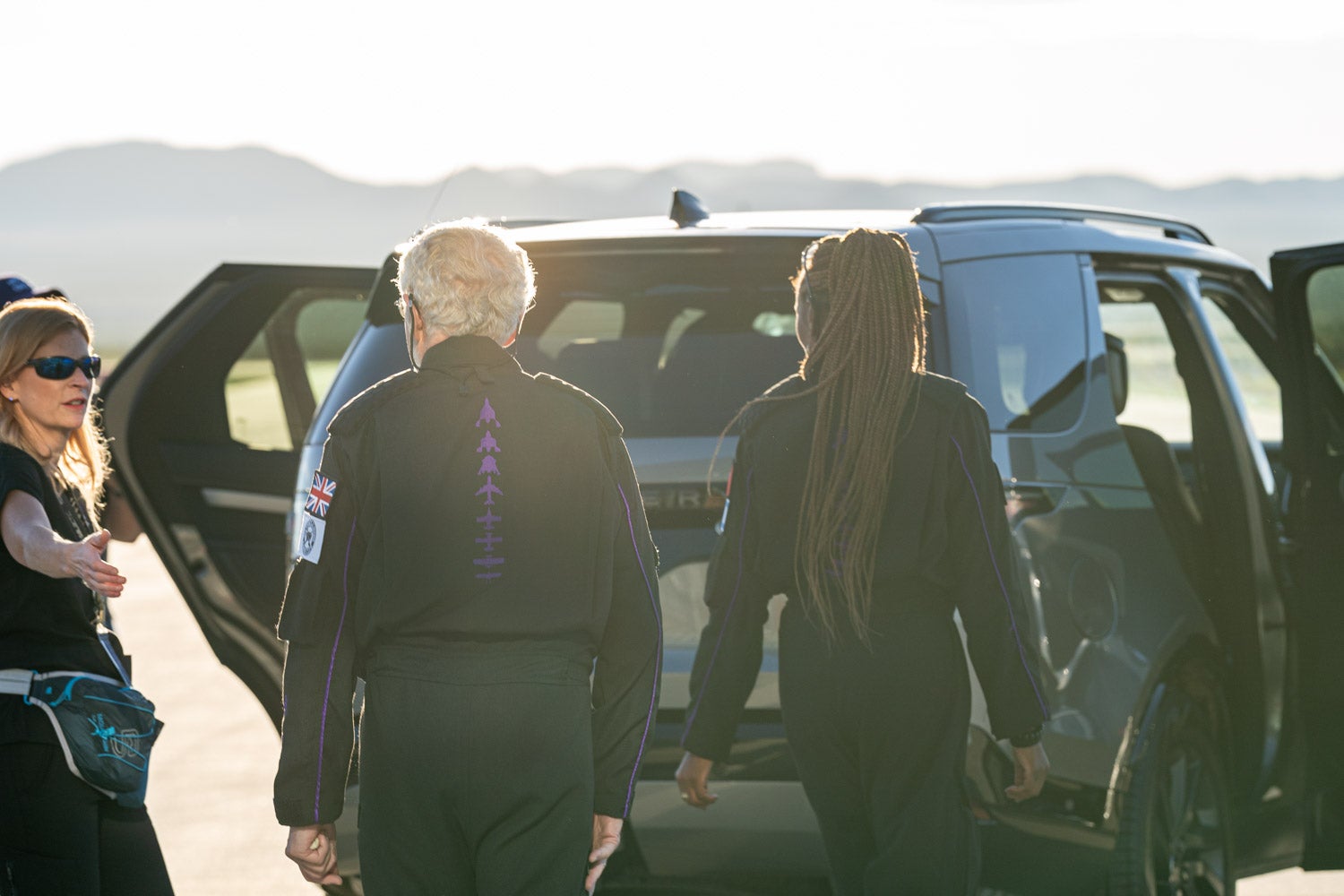
They head down a lighted path and out through the main doors, where they say farewells and climb into waiting Land Rovers to drive to the ship.
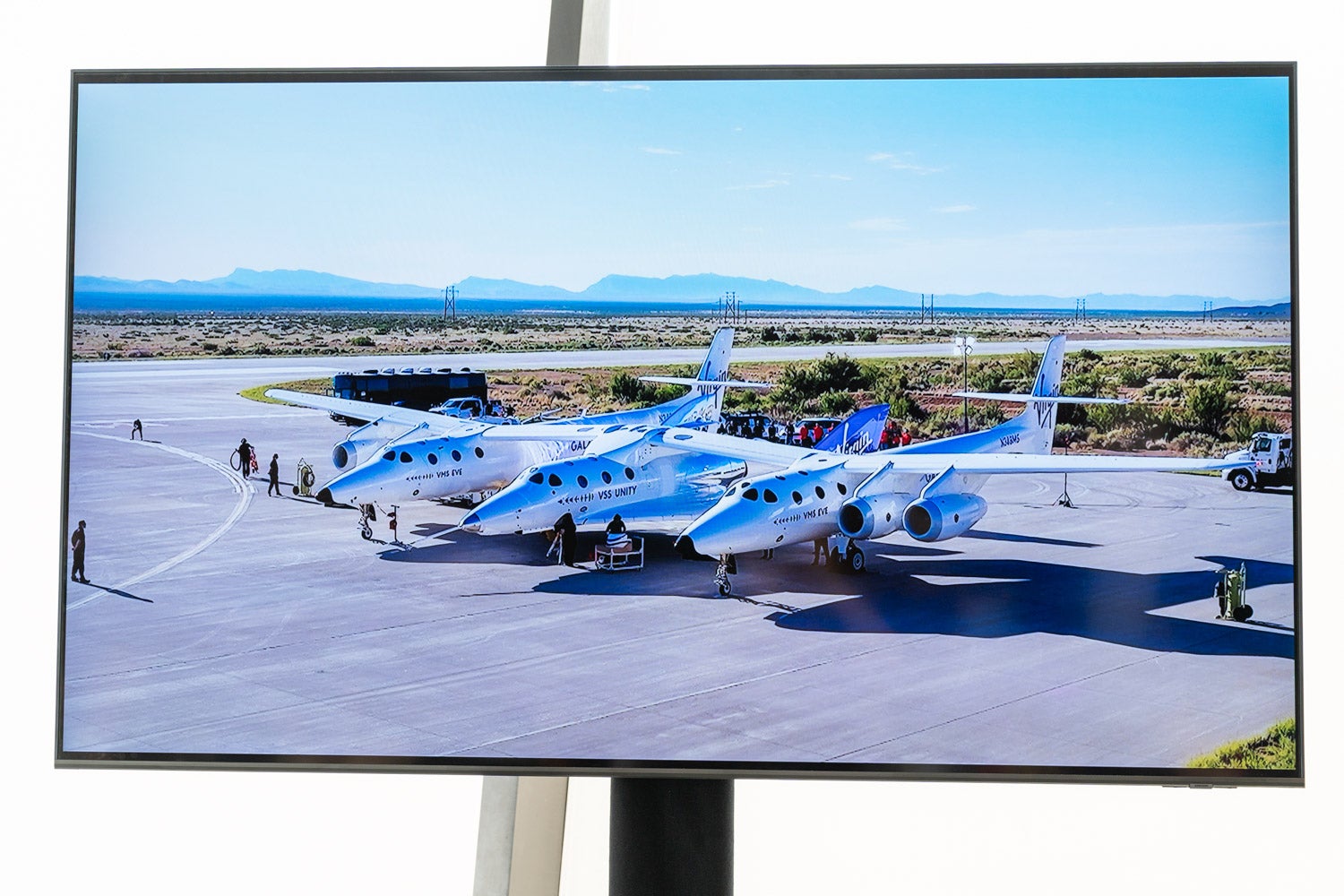
Spaceport America features a 12,000-foot runway. Depending on which way the wind is blowing, the spacecraft is positioned at either end of the runway, and the luxury SUVs carry the passengers over to climb aboard.
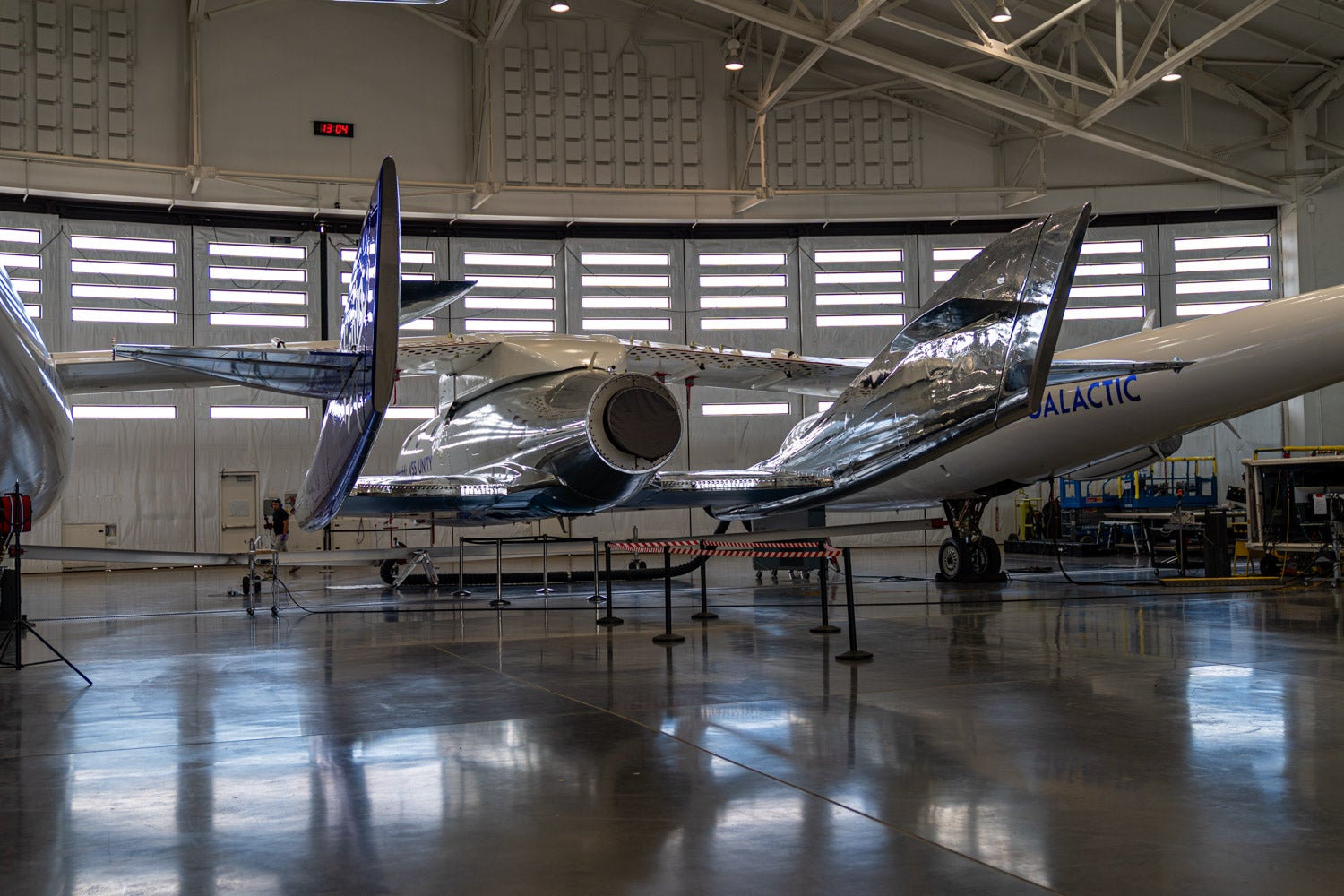
Virgin Galactic took a different space design approach than Blue Origin or SpaceX.
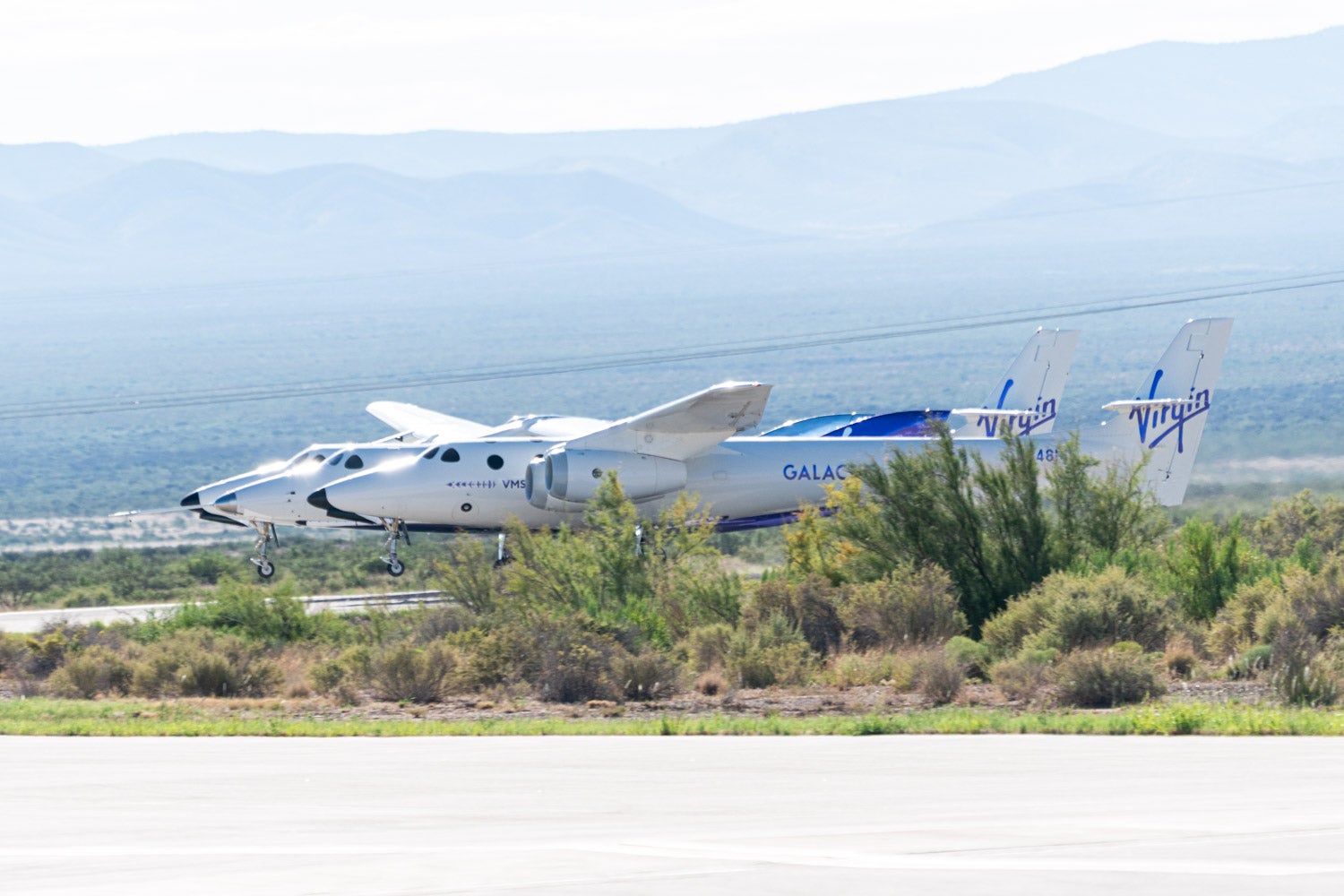
Rather than a ship attached to a large rocket that uses a vertical liftoff like a traditional spaceship, Virgin’s ship — a small delta-wing craft with tall vertical stabilizers and room for six, including two pilots — attaches to a dual-fuselage mothership.
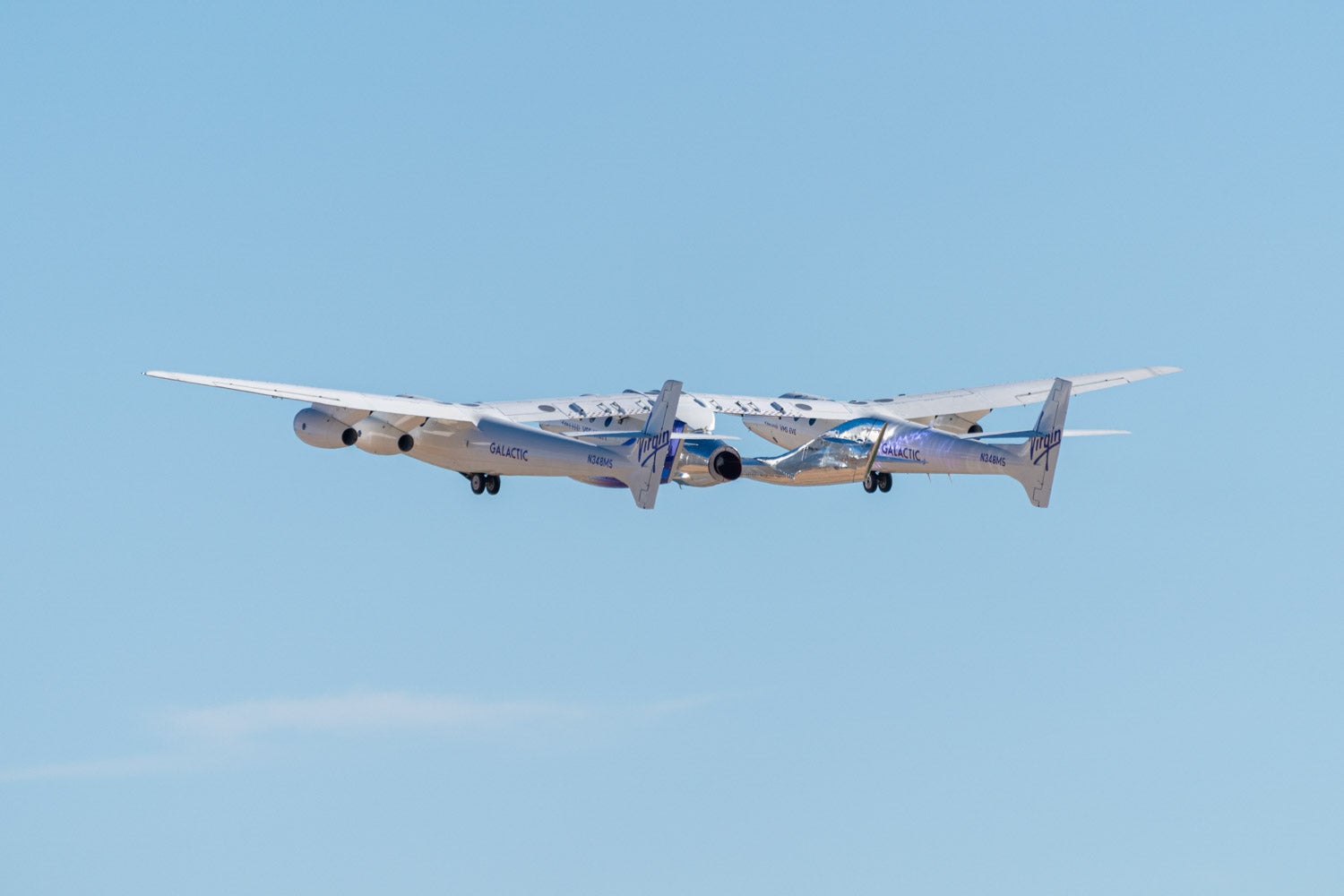
The mothership takes off like any normal airplane, aside from the second fuselage — which balances the plane — and the spaceship it carries between its two hulls.
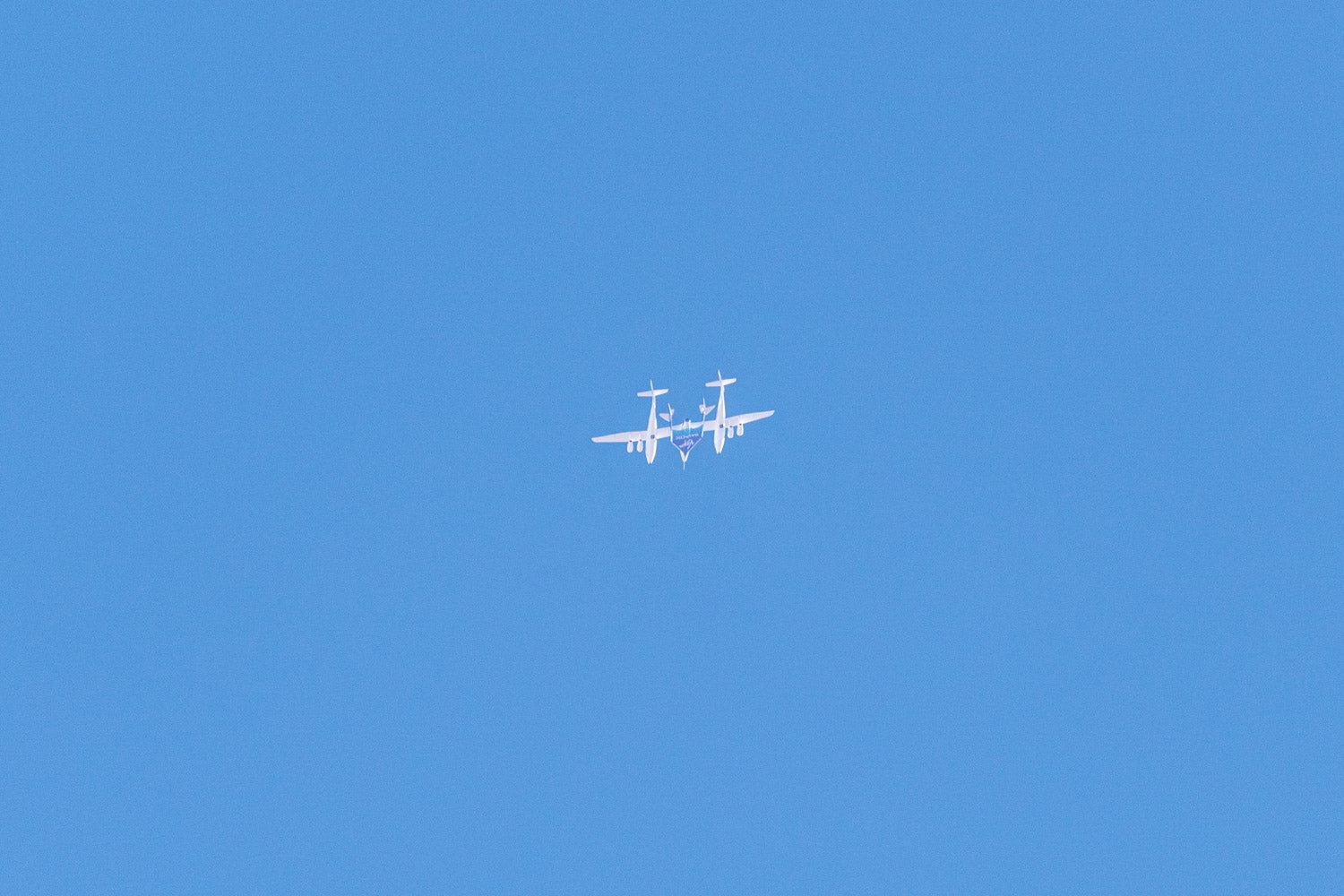
Once it’s airborne, the two mated ships spend about an hour climbing to around 47,000 feet, tracing out a circular path around the spaceport and then continuing to fly in circles at altitude, running final tests and checks along the way.
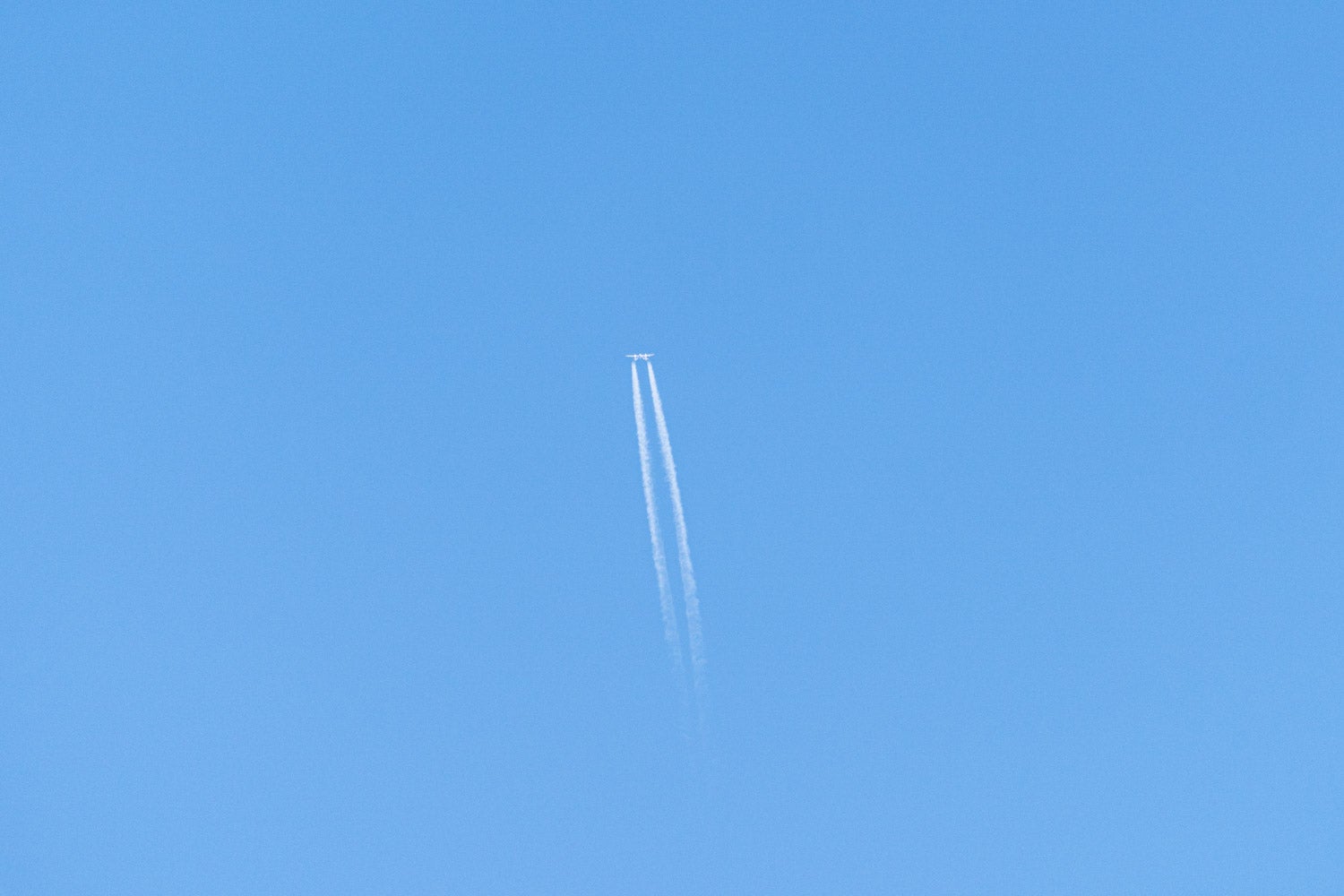
At this point, around 8:30 in the morning, it was difficult to spot the aircraft. Only some newly emerging contrails gave away the mothership’s position. As large screens outside on the tarmac showed livestreams from inside the cockpit and outside the hull, the pilots of both aircraft confirmed everything was ready to go before reaching a predetermined launch point and relaying the critical command: “release, release, release.”
From 47,000 feet below, it’s hard to tell the moment that the mothership drops the spaceship. This would be when the smaller craft starts to glide and lose altitude, and the mothership bounces upward, relieved of more than half its weight, and banks away.

But there’s no mistaking the moment the spaceship ignites its rocket to begin the climb to suborbital space.
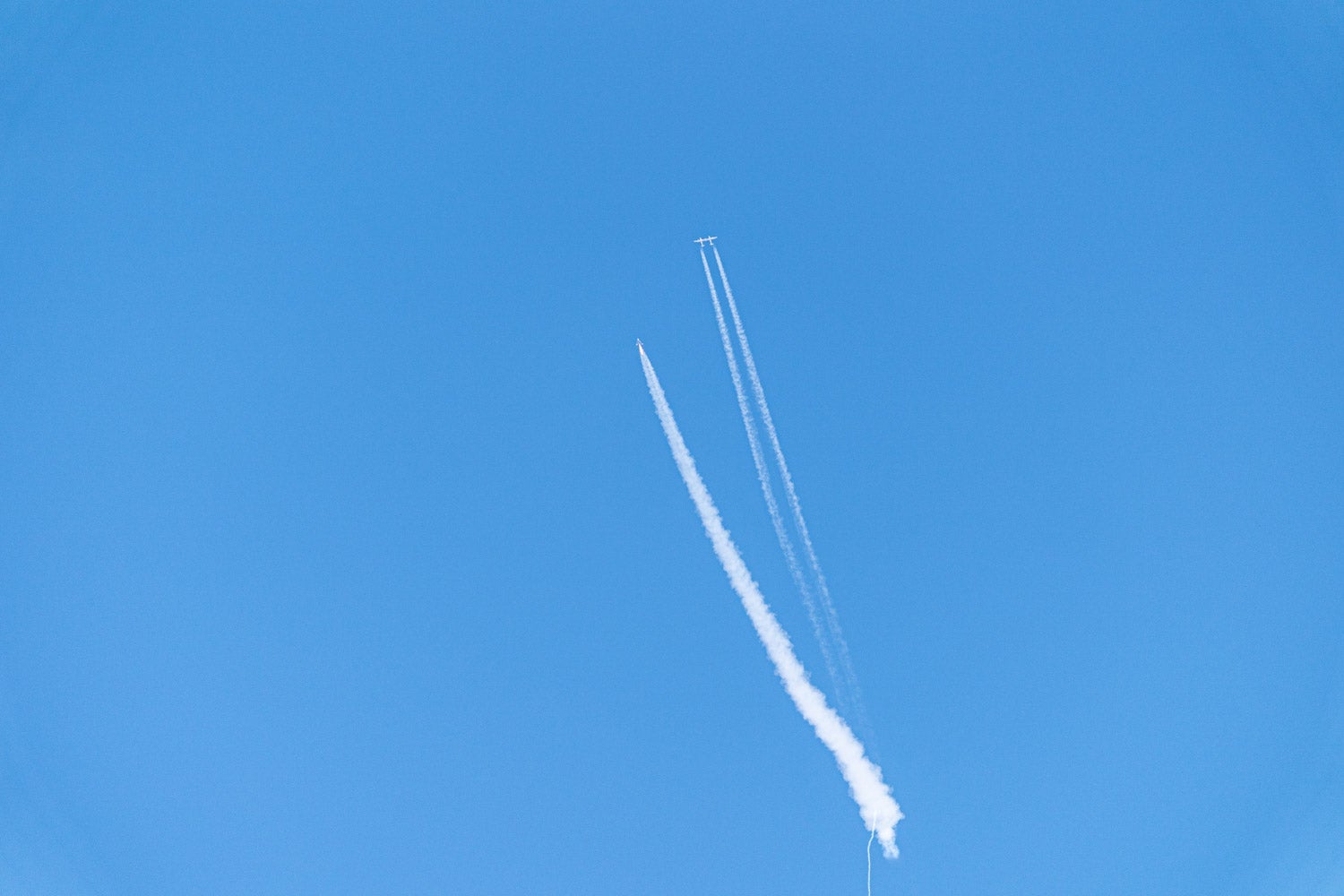
As the mothership turns away, a small, barely visible speck suddenly shines with a bright orange flame, creating a trail of smoke behind it. It starts slow, but as the craft accelerates past Mach 3, observers on the ground can see the astounding speed and power compared to the plane that carried it up to its starting point.
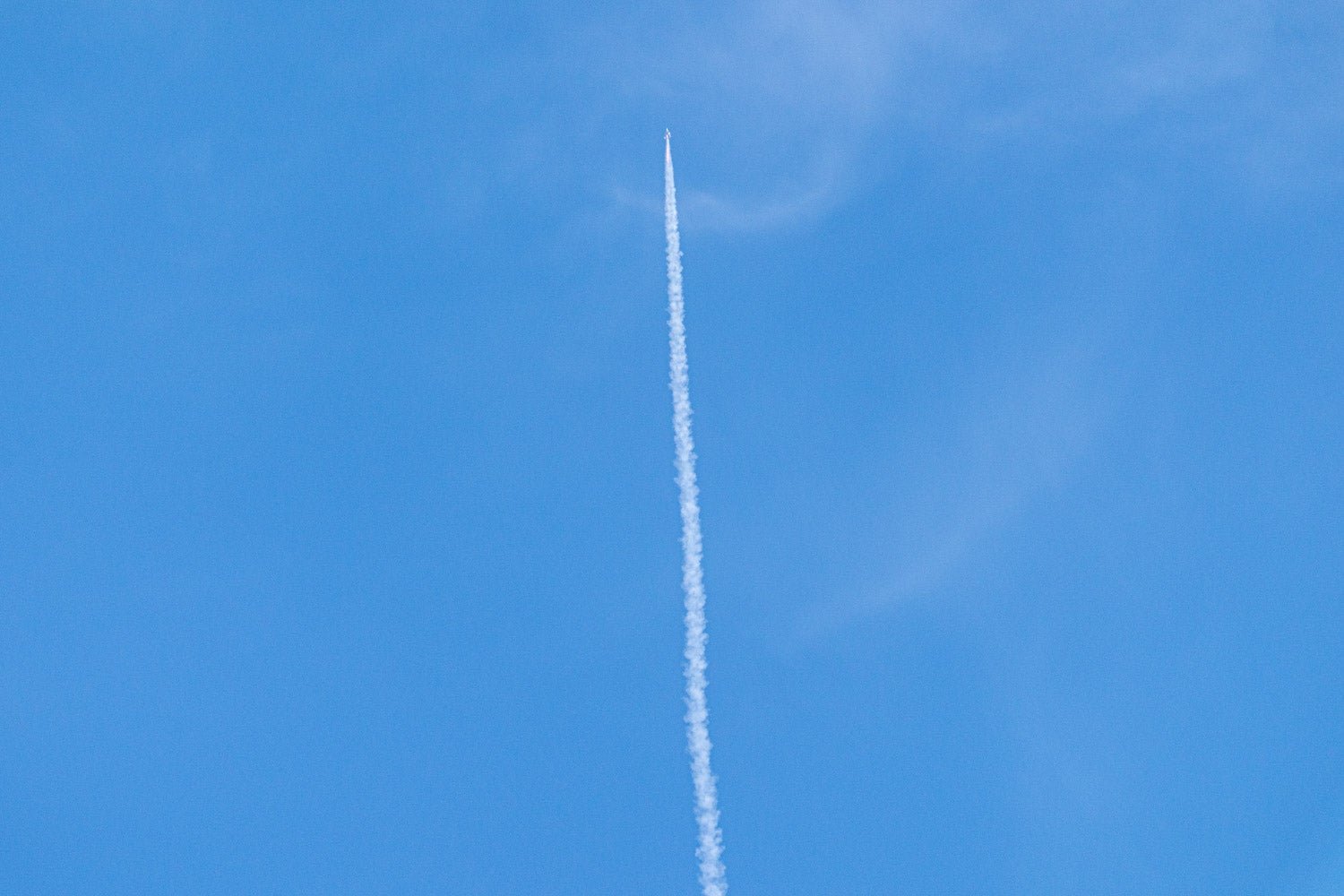
The column of smoke grows, expanding faster and faster, and after hardly a minute, it stops forming. You realize the spaceship is entirely out of sight.
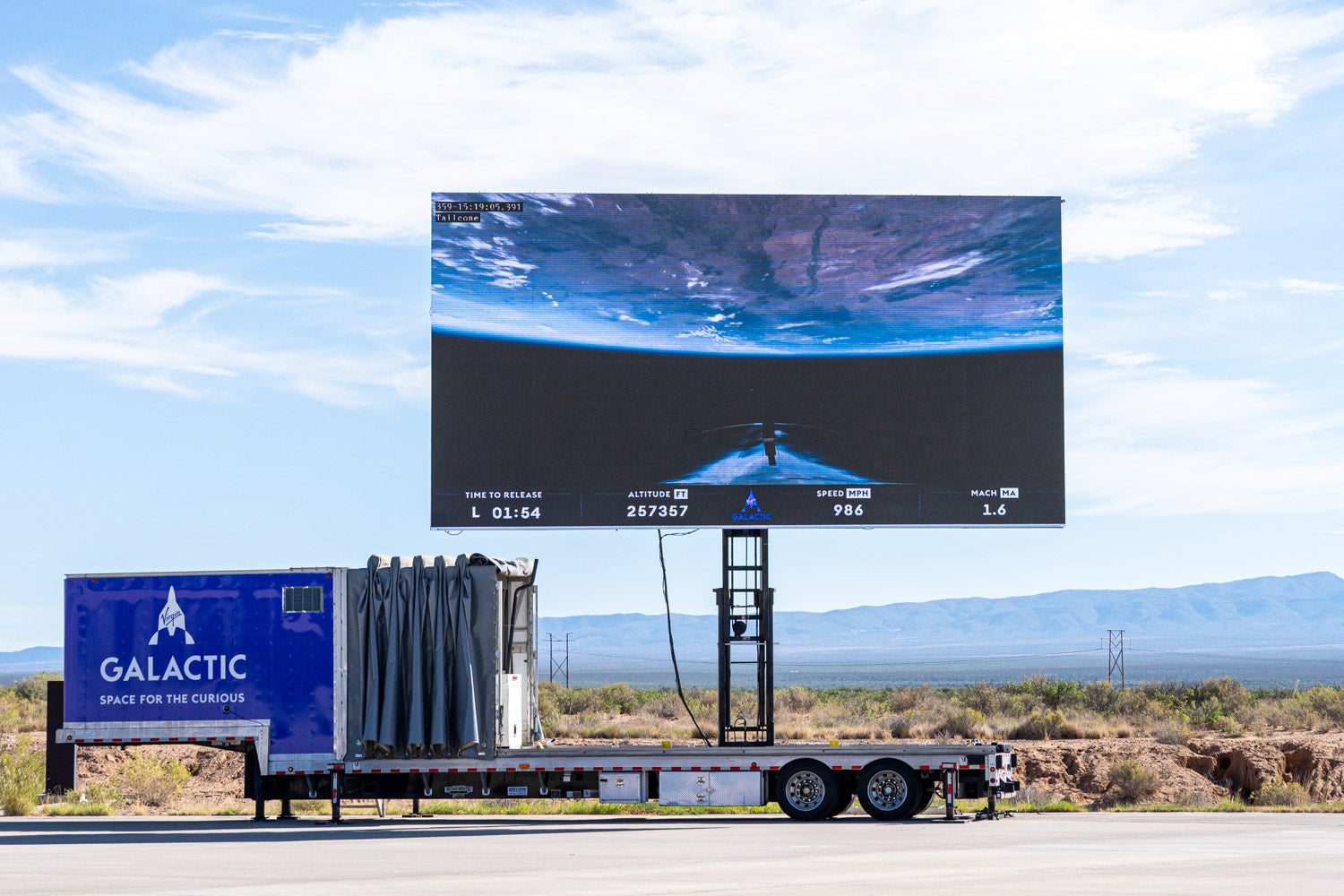
Fortunately, the viewing screens offer a glimpse at what’s happening.
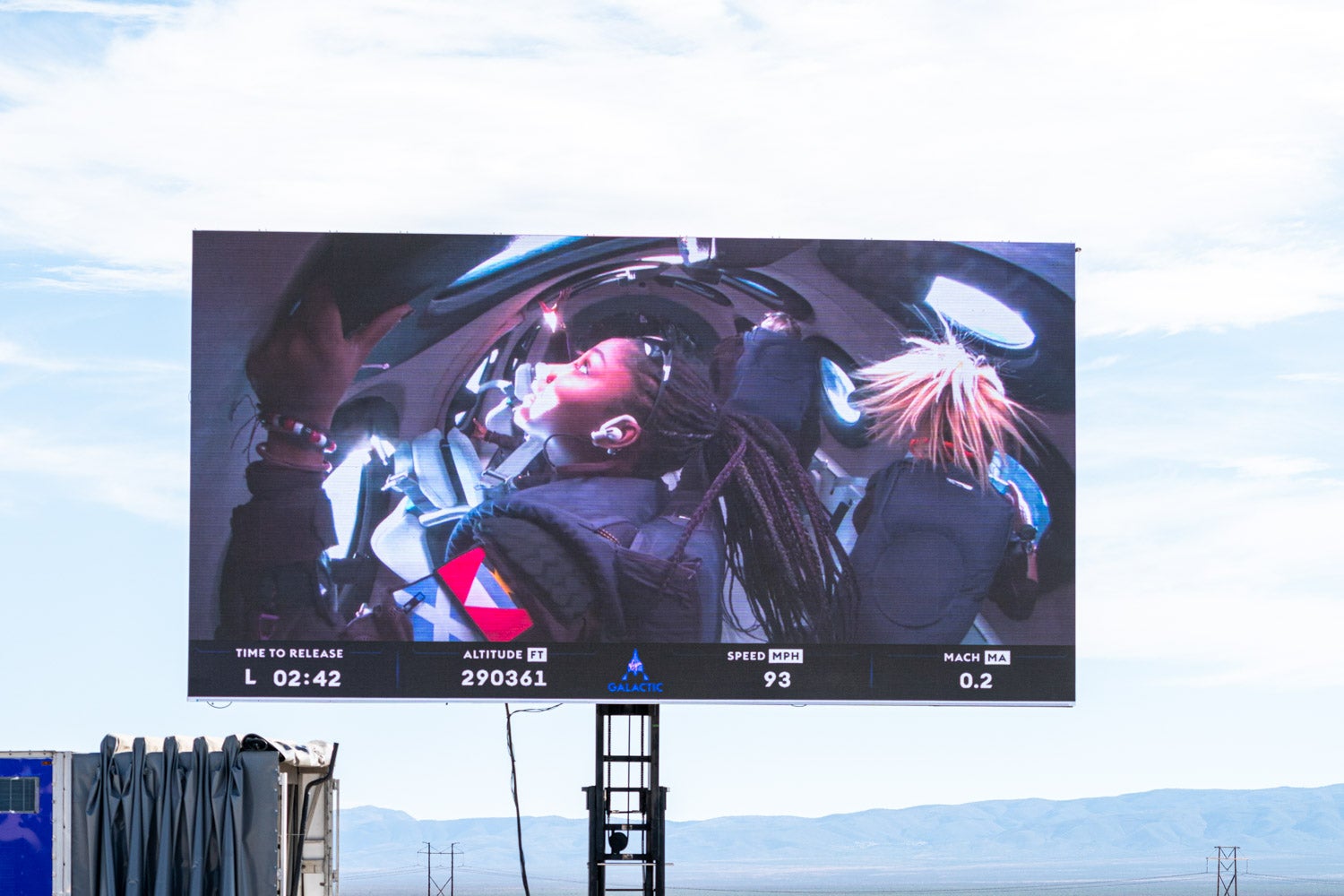
At nearly 300,000 feet (or 56 miles) overhead, the traveler-astronauts have unbuckled their safety harnesses and floated out of their seats. Images of floating hair fill the screens as the astronauts stare out the windows at the Earth below them. While the ride doesn’t go as high as orbital space, it’s still high enough to view the Earth’s curvature and see the vast, broad landscape below.
It’s been about three minutes, and the spacecraft has reached its apogee. It’s upside down, with its roof facing the Earth, giving the astronauts their best view as they prepare to return to their seats for reentry.
The spacecraft finishes its turn and is reoriented to enter properly. As it drops from the lower thermosphere, through the mesosphere and into the stratosphere, the spacecraft’s wings begin facing increasing air resistance, slowing its descent.
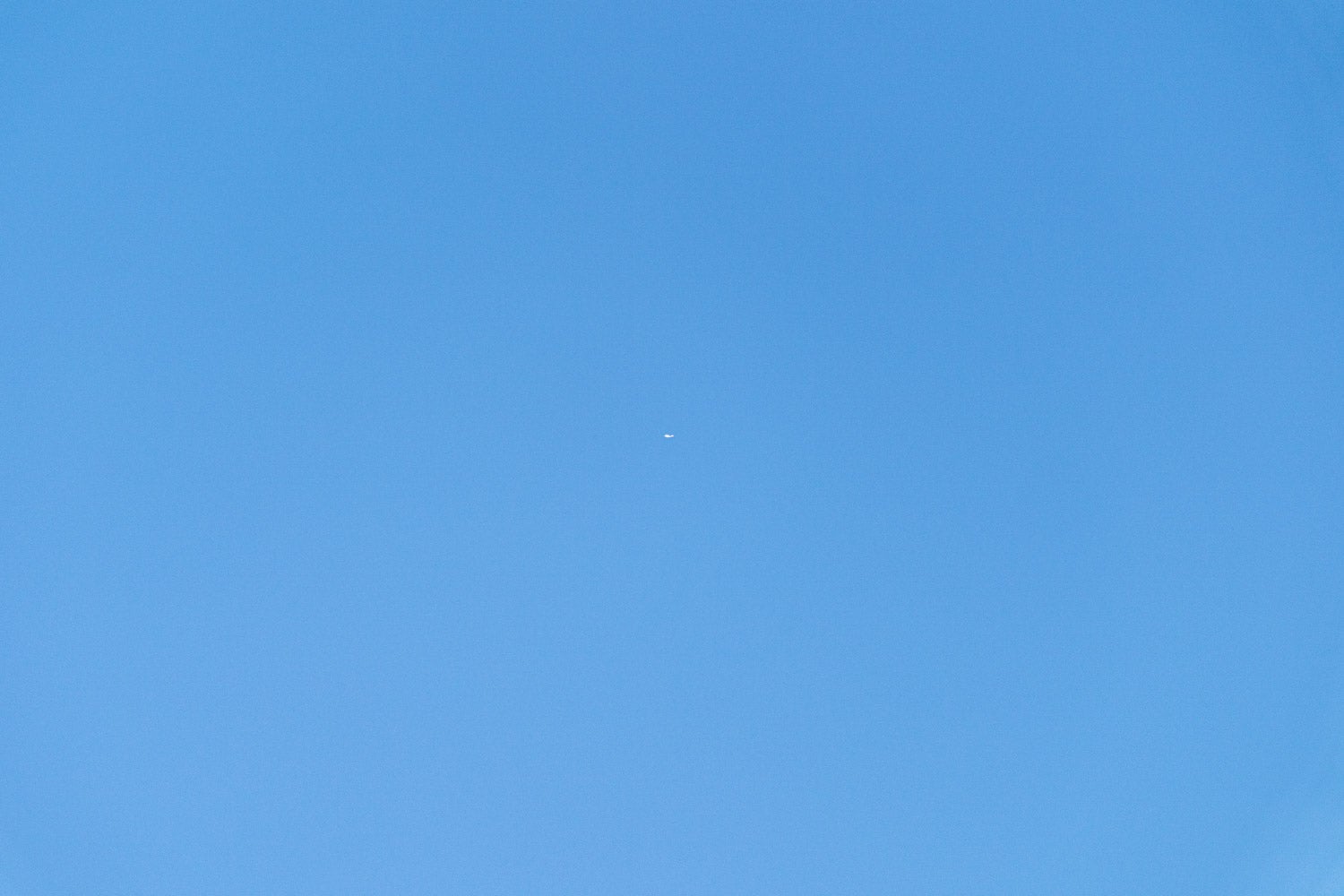
At this point, if you squint very hard in just the right direction, you’ll notice a tiny speck.

Meanwhile, the remainder of the flight is unpowered. The spaceship is a glider with no thrust at all. The descent is fairly rapid but controlled as the pilots fly a deliberate looping pattern, burning off massive potential energy and providing a new unique view.
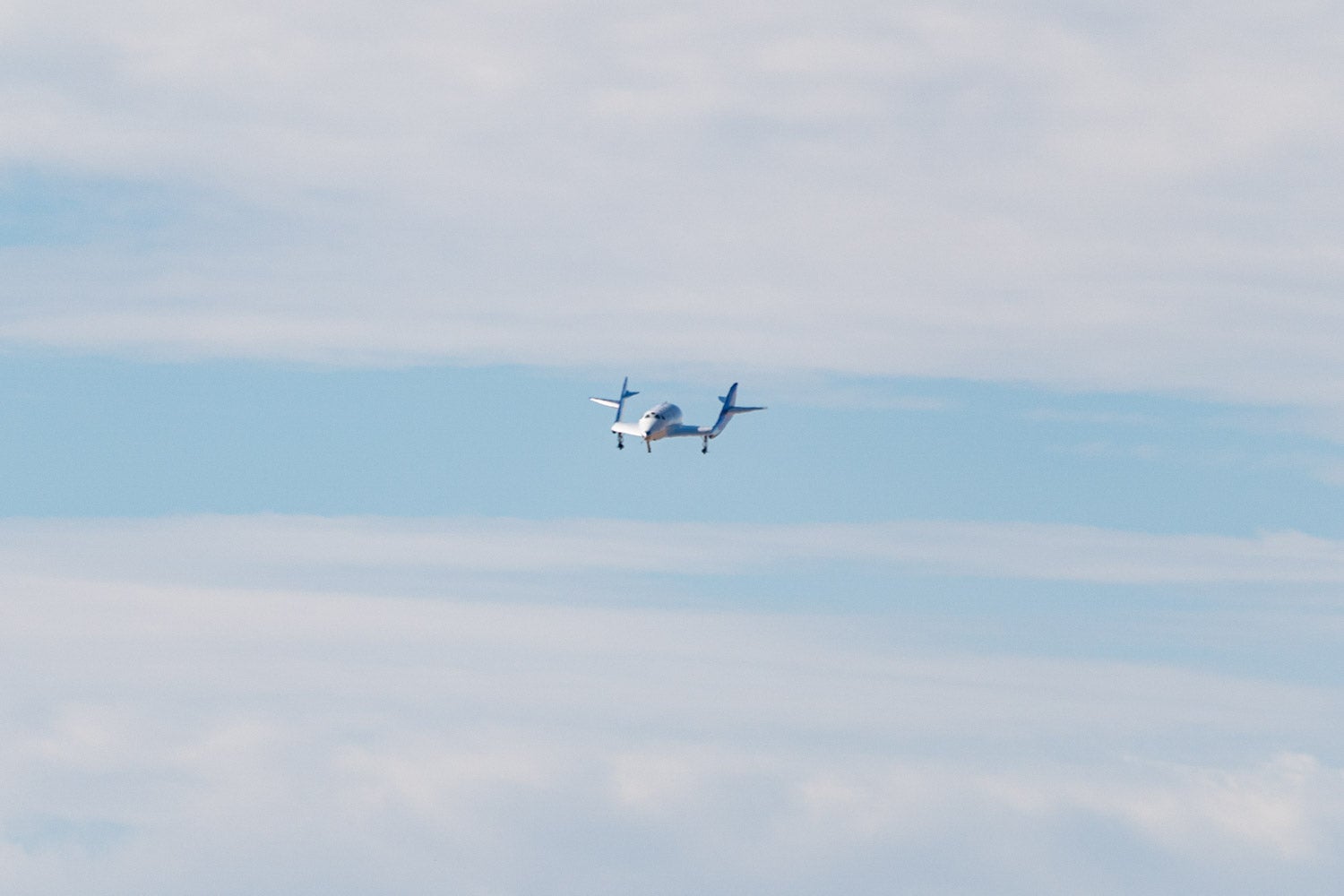
The spaceship continues its descent, which takes only minutes. The pilots maneuver the highly sophisticated glider and line up with the runway.
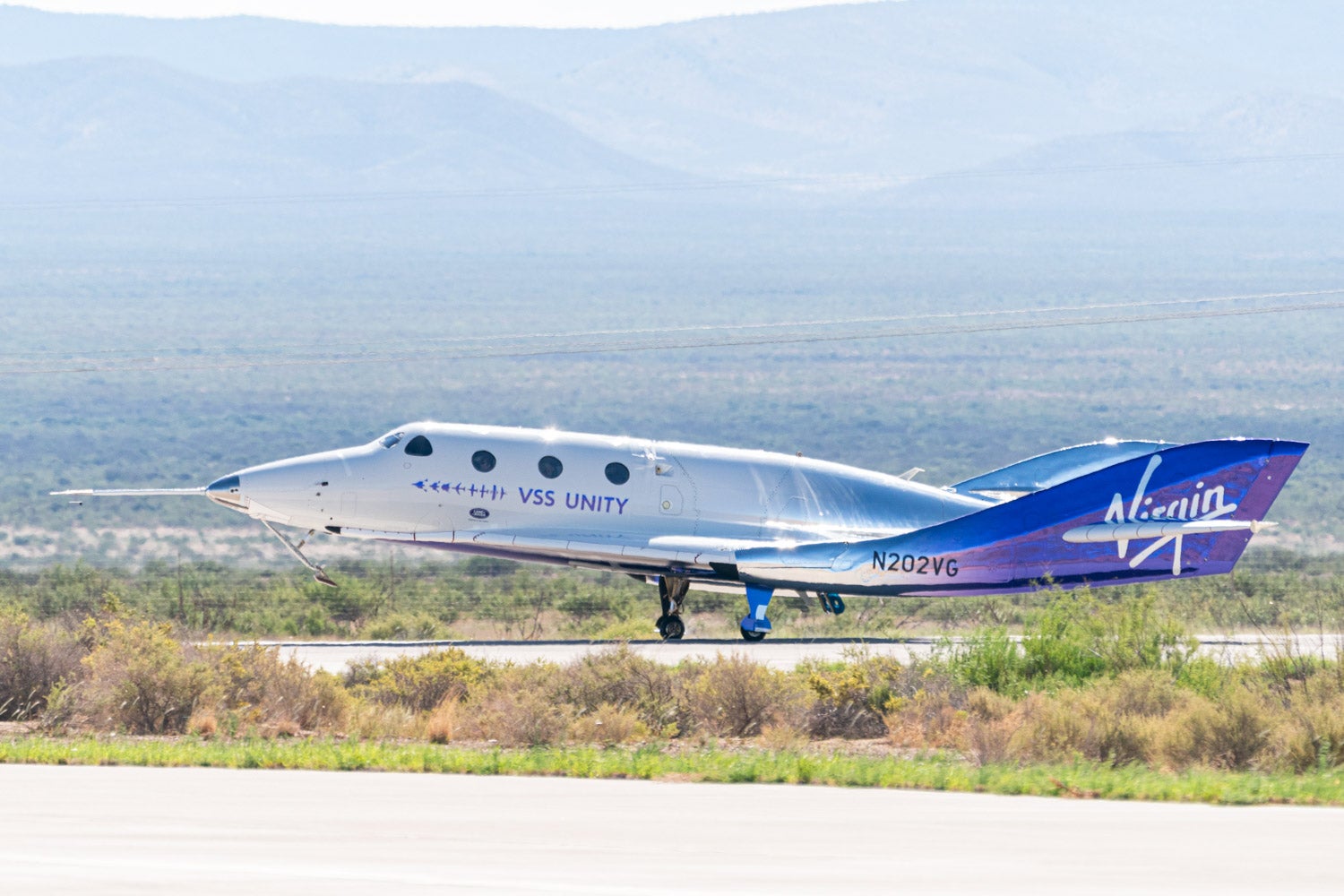
Moments later, with a remarkably simple and quiet landing, the ship officially returns to solid earth.
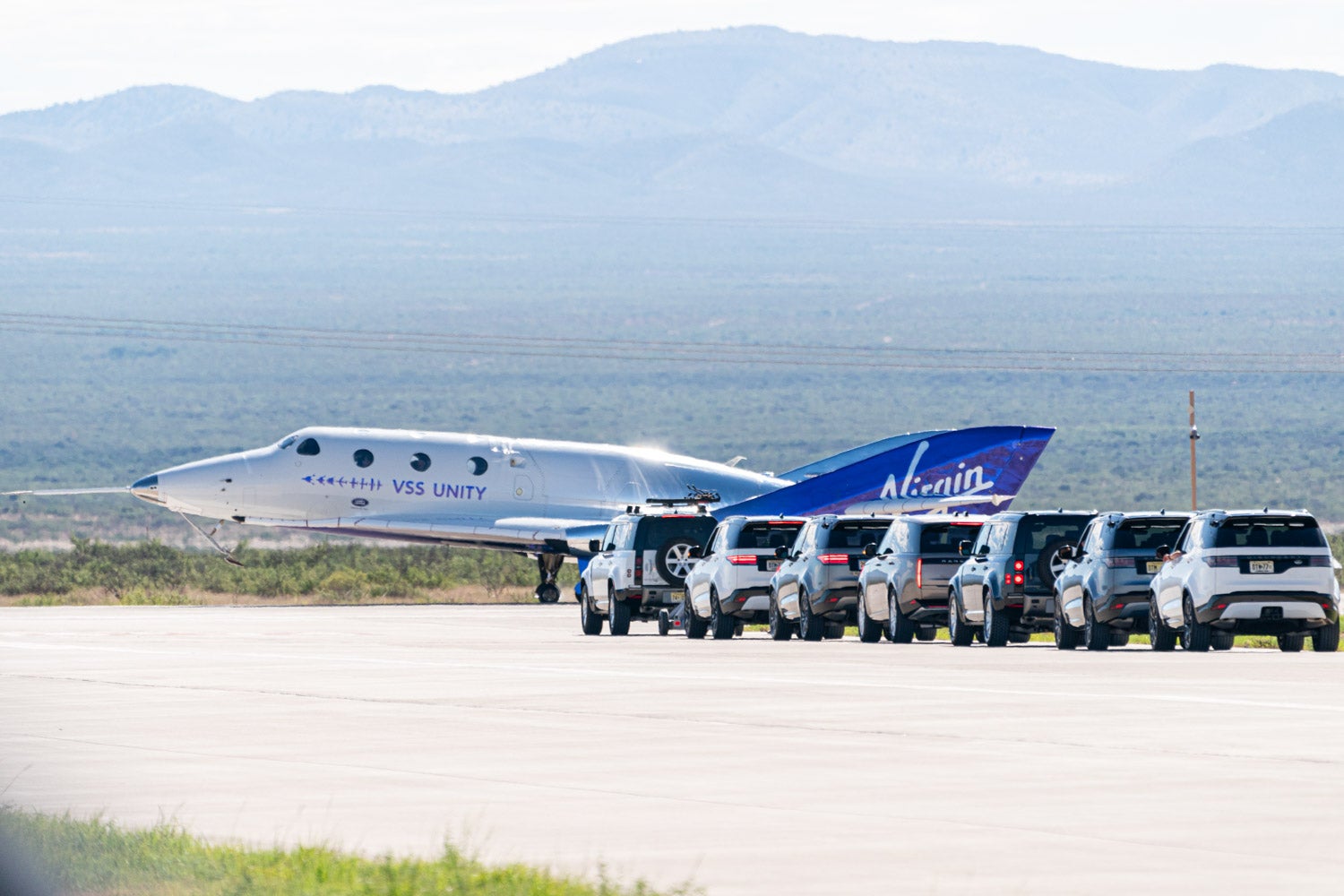
A fleet of waiting Land Rovers heads out to meet the ship. One, which serves as a tow, hooks onto the front of the spacecraft.
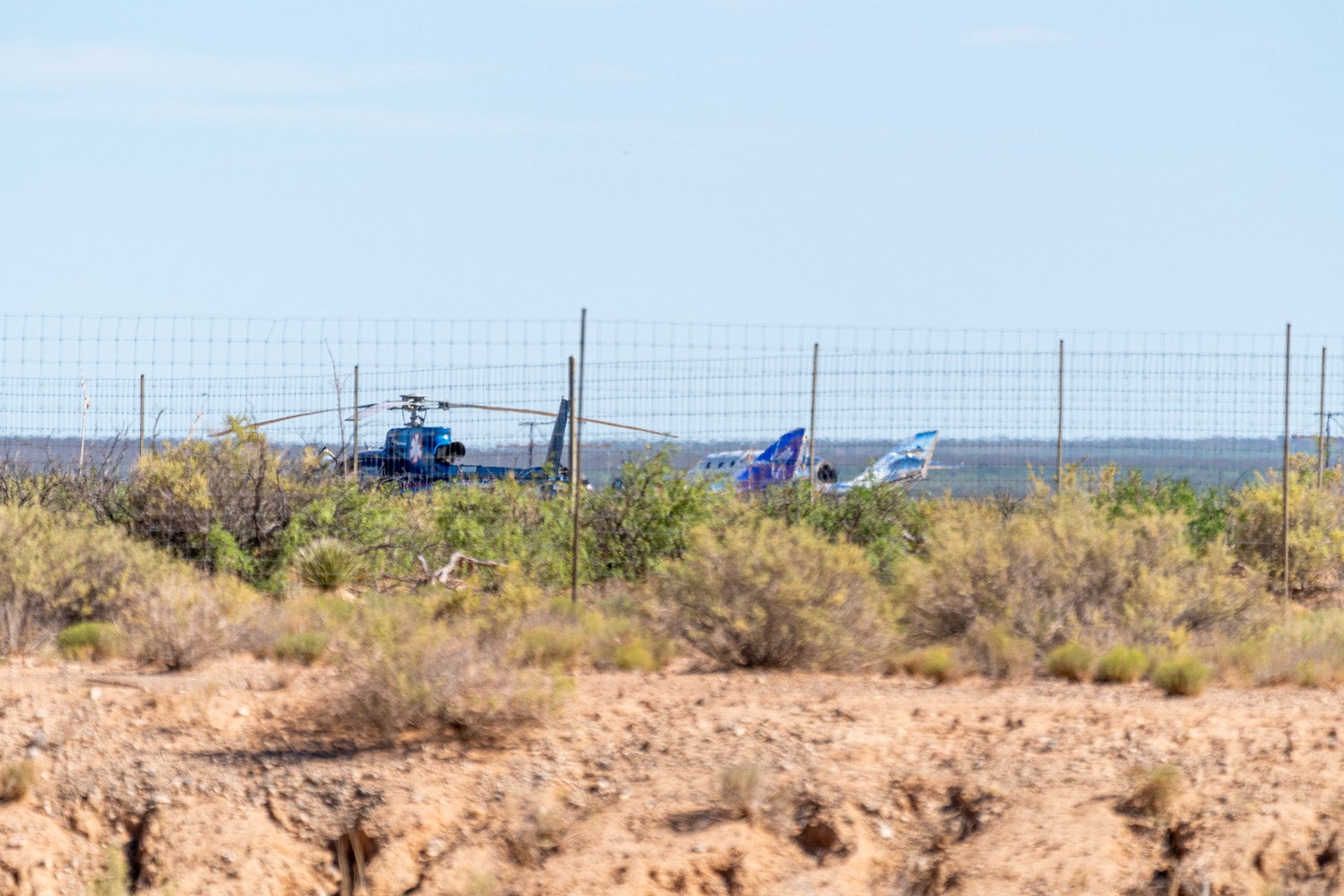
For this flight, the ship was ferried over a ridge on the other side of the runway to meet a medical crew standing by with a helicopter to make sure that all the passengers were feeling OK after experiencing such a massive change in gravitational forces. (They all were.)
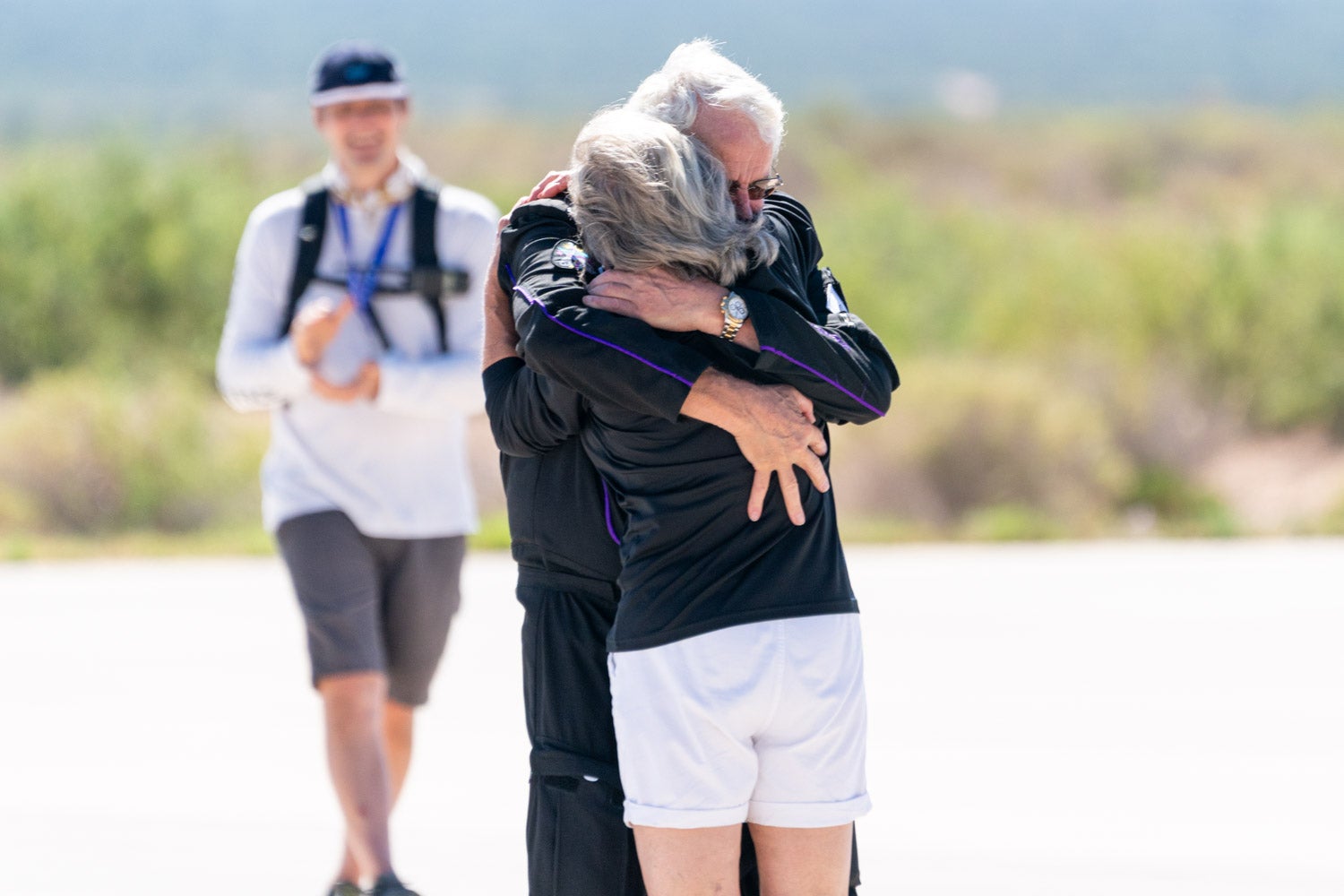
The travelers were driven over to the waiting crowd, where they reunited with their families and friends. The journey was over, but in a quick address to the crowd, they described their short experience as life-changing.
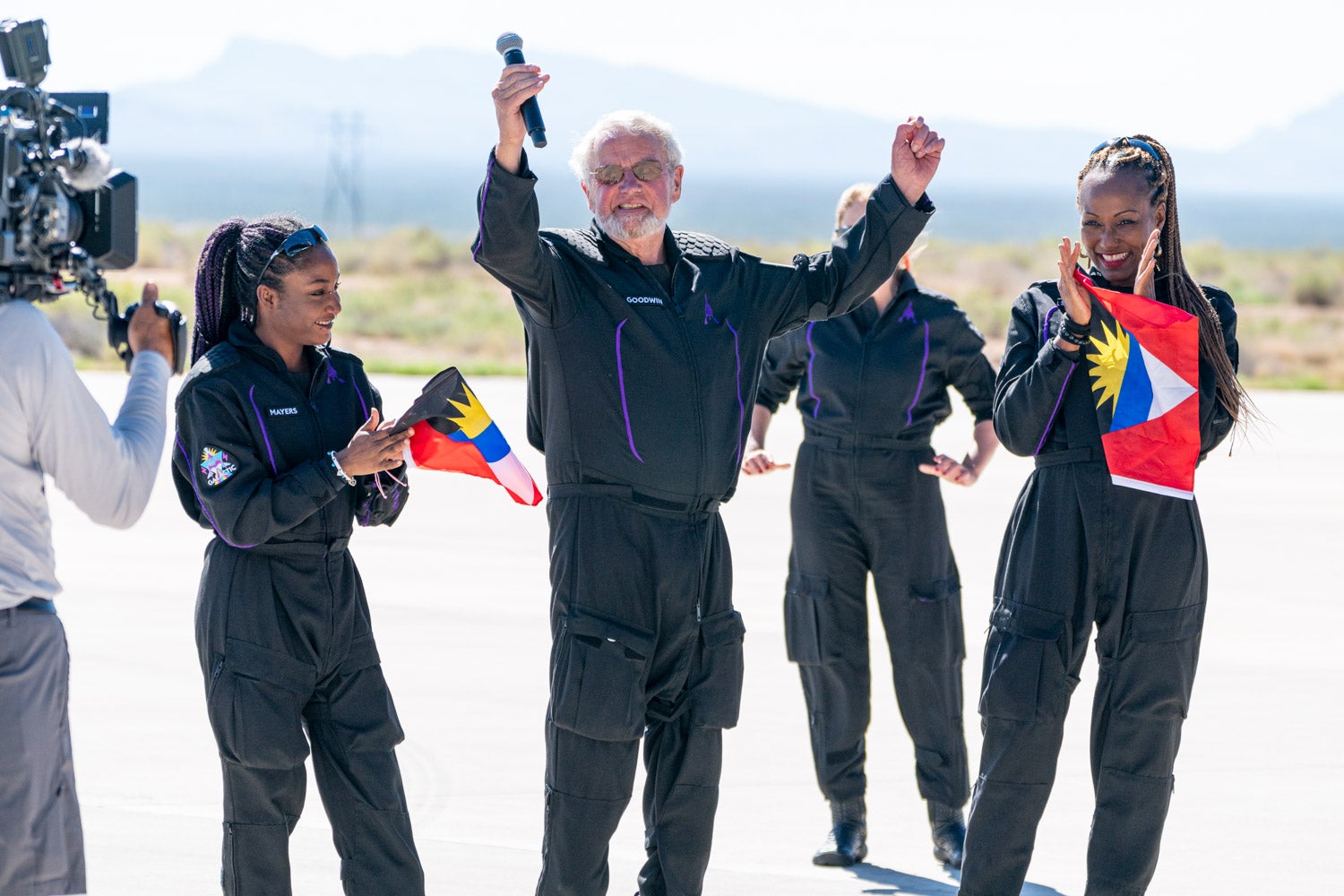
Schahaff also quipped that she had seen it with her own eyes and could confirm: The Earth is round.
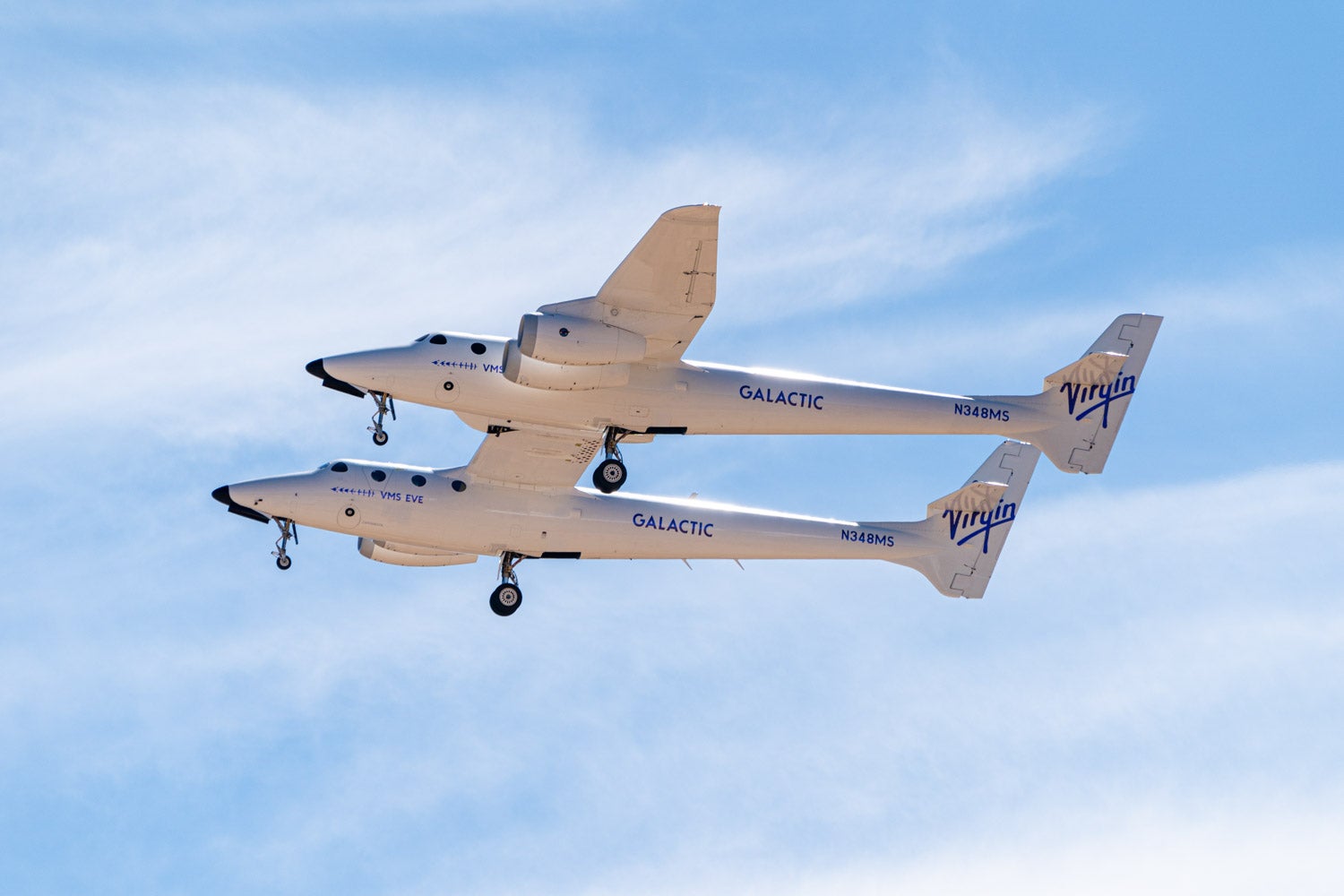
What to expect in the future
With such an exorbitant price point, it’s likely years, if not decades, before space tourism can become attainable for a broader swath of the public. Virgin says that once it begins manufacturing its spacecraft en masse at a rate of roughly four to six per year, prices will come down. However, it will never exactly be “cheap.”
There are also obvious environmental concerns — as spaceflight generates a significant amount of emissions — particularly if the industry grows as expected. Still, the flight crossed a new frontier with the first tourists to visit space, and only time will tell whether this is the start of a new era.
Related reading:
- Richard Branson takes Virgin Galactic test flight
- Virgin Galactic is getting closer to taking passengers into space
- Virgin Galactic new lounge and mission control
- When is the best time to book flights for the cheapest airfare?
- The best airline credit cards
- Maximize your airfare: The best credit cards for booking flights



